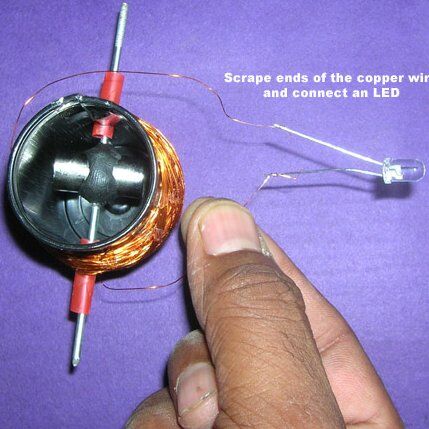Esperimenti scientifici per bambini – Costruire un generatore di corrente alternata. Un generatore elettrico è uno strumento che trasforma energia meccanica in energia elettrica, il cui principio di funzionamento si basa sul fenomeno dell’induzione elettromagnetica.
Se, tramite la variazione di un campo magnetico, è possibile indurre una corrente in un circuito, la corrente prodotta può anche essere utilizzata, per esempio per accendere una lampadina.
I generatori elettrici impiegati negli impianti per la produzione di elettricità sono strumenti piuttosto complessi, ma il loro principio di funzionamento è molto semplice.
Schematicamente sono costituiti da uno o più avvolgimenti di filo conduttore (bobine), ai quali viene fornita energia meccanica per farli ruotare all’interno di un intenso campo magnetico. L’energia meccanica può essere fornita per esempio da una turbina mossa dall’acqua in un impianto idroelettrico, o dalla combustione in un impianto termoelettrico.
La bobina, libera di ruotare, viene detta rotore, mentre il magnete fisso viene detto statore.
Come funziona: la rotazione del magnete genera un campo magnetico variabile, questo determina nell’avvolgimento la generazione di una corrente elettrica in base ad uno dei principi fondamentali dell’elettromagnetismo: “In un conduttore immerso in un campo magnetico variabile si genera una corrente elettrica.”
Per ottenere una tensione più elevata bisogna aumentare il numero di spire dell’avvolgimento.
Esperimenti scientifici per bambini
Costruire un generatore di corrente alternata
Progetto 1
Cosa serve:
due magneti ceramici cilindrici potenti (almeno 10x10mm),
filo di rame,
una lampadina led,
una bacchetta di metallo (un ferro da maglia o un raggio di ruota di bicicletta, ad esempio),
un pezzetto di gomma da cancellare o del mastice,
una cannuccia da bibita (o un vecchio pennarello) e un tubo di plastica (ad esempio un contenitore per rullini).
Unire i due magneti col mastice o la gomma, e passare attraverso la giuntura la bacchetta di metallo.
Praticare due fori sul cilindro di plastica, inserire due pezzetti di cannuccia, ed alloggiarvi la bacchetta, in modo che possa ruotare liberamente.
Girare attorno al cilindro il filo di rame (almeno 700 volte) e collegare il led.
Tutto come spiegato qui…
Girando la bacchetta il led si accenderà.
Esperimenti scientifici per bambini
Costruire un generatore di corrente alternata
Progetto 2
In questo progetto, simile al precedente, si consigliano magneti di almeno 22mm:
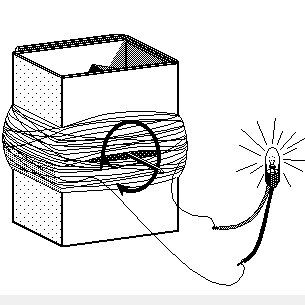
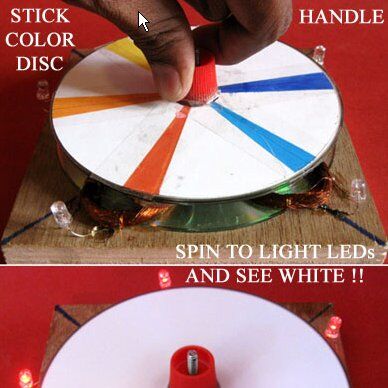
http://www.arvindguptatoys.com/toys/Spoolgenerator.html
Questa è una variante con 5 led, sempre da azionare a mano:
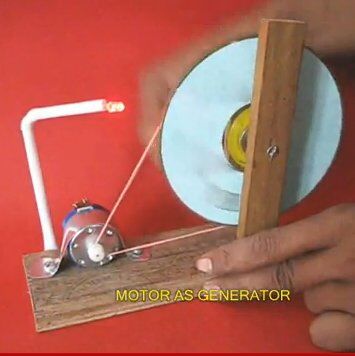
http://www.arvindguptatoys.com/
_________________________
Idee per azionare la bacchetta più velocemente:
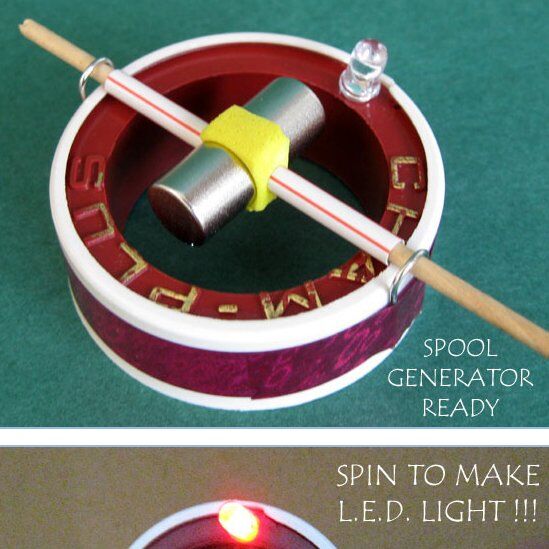
http://www.arvindguptatoys.com/
In realtà nel video la cinghia è collegata ad un motore di un vecchio giocattolo, ma il collegamento può essere fatto anche alla bacchetta del nostro generatore, così:
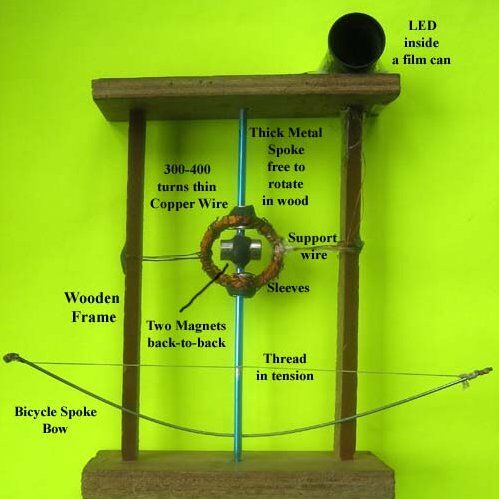
http://www.arvindguptatoys.com/
___________________________
E qui, meraviglia…
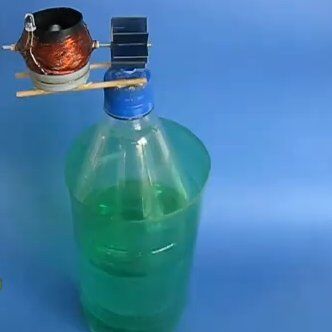
…un faro!
___________________________
Esperimenti scientifici per bambini
Costruire un generatore di corrente alternata
Fonti:
http://www.sapere.it/sapere/strumenti/
http://madscientist.altervista.org/
http://www.arvindguptatoys.com/
Science experiments for children – Simple electric generators. An electrical generator is a tool that converts mechanical energy into electrical energy, whose operating principle is based on the phenomenon of electromagnetic induction.
If, through the variation of a magnetic field, it is possible to induce a current in a circuit, the current produced can also be used, for example to turn on a light bulb.
The electric generators used in plants for the production of electricity are tools rather complex, but their operating principle is very simple.
Schematically they are constituted by one or more windings of conductive wire (coil), to which is supplied mechanical energy to rotate them within an intense magnetic field. The mechanical energy can be provided for example by a turbine powered by water in a hydroelectric plant, or from the combustion in a thermoelectric power plant.
The coil, free to rotate, is called the rotor, while the fixed magnet is said stator.
How it works: the rotation of the magnet generates a variable magnetic field, this produces inside of it the generation of an electric current according to one of the fundamental principles of electromagnetism: “In a conductor immersed in a variable magnetic field generates an electric current.”
To obtain a higher voltage is necessary to increase the number of turns of the winding.
_____________________
Science experiments for children – Simple electric generators
project 1
What do you need?
two cylindrical ceramic magnets powerful (at least 10x10mm)
copper wire,
a LED light bulb,
a metal rod (an iron mesh or a radius of a bicycle wheel, for example),
a piece of eraser or mastic,
a drinking straw (or an old marker)
a plastic tube (such as a container for photographic film).
http://www.arvindguptatoys.com/
What to do?
Combine the two magnets with
mastic or rubber, and go through the joint the metal rod.
Drill two holes in the plastic cylinder, place two pieces of straw, and insert the rod, so that it can rotate freely.
Turning around the cylinder the copper wire (at least 700 times) and connect the LED.
Turning the rod The LED will light.
_________________________
Science experiments for children – Simple electric generators
project 2
In this project, similar to the above, are recommended magnets of at least 22mm:
__________________________
Science experiments for children – Simple electric generators
Other media, the same principle:
http://www.arvindguptatoys.com/toys/Spoolgenerator.html
This is a variant with 5 led, always to operate by hand:
http://www.arvindguptatoys.com/
_________________________
Science experiments for children – Simple electric generators
Ideas for operating the wand faster:
http://www.arvindguptatoys.com/
Indeed in the video the strap is connected to a motor of an old toy, but the connection can also be made to the rod of our generator, in this way:
http://www.arvindguptatoys.com/
___________________________
And here, wonder…

…a lighthouse!
___________________________
Science experiments for children – Simple electric generators
Links
http://www.sapere.it/sapere/strumenti/
http://madscientist.altervista.org/
http://www.arvindguptatoys.com/
http://www.creative-science.org.uk/gen1.html
http://www.allaboutcircuits.com/textbook/alternating-current/chpt-1/what-is-alternating-current-ac/
